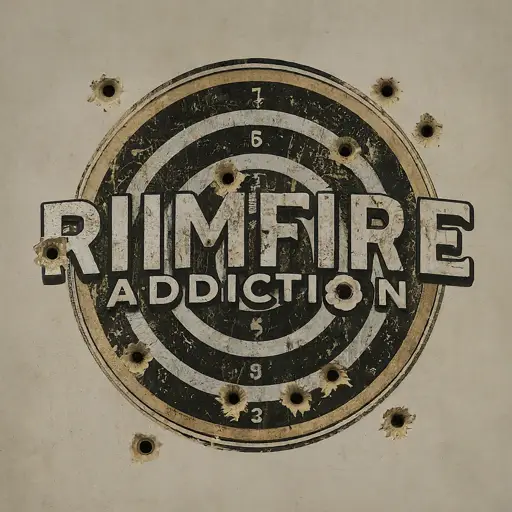Rimfire target shooting is an excellent way to develop marksmanship skills, enjoy the outdoors, and participate in a challenging sport. Whether you’re a beginner looking to practice or an experienced shooter aiming to hone your skills, setting up a personal rimfire target range can provide countless hours of enjoyment and improvement. This article will guide you through the process of creating your own rimfire target shooting practice range, covering everything from safety considerations to target selection.
Understanding Rimfire Ammunition
Before diving into range setup, it’s important to understand what rimfire ammunition is. Rimfire cartridges such as .22 Long Rifle (.22LR) are named for their firing mechanism. Unlike centerfire ammunition, where the firing pin strikes a primer at the center of the cartridge base, rimfire ammunition is ignited when the firing pin strikes the rim of the cartridge base. This design makes rimfire ammunition less expensive and produces less recoil, making it ideal for target practice and training.
Choosing a Location
The first step in setting up your rimfire target range is selecting an appropriate location. Safety is paramount, so ensure your chosen location has a suitable backstop to catch bullets and prevent ricochets. Natural hillsides or specially constructed berms work well. Check local laws and regulations regarding shooting on private property, as some areas may have restrictions on discharge of firearms or require minimum distances from occupied buildings. A rimfire range doesn’t need to be extremely long; for most practice, 50 to 100 yards is sufficient. However, ensure you have enough width to accommodate multiple targets if desired. Choose a location that’s easily accessible but away from high-traffic areas to minimize disturbances and ensure safety. While rimfire firearms are generally quieter than their centerfire counterparts, be mindful of neighbors and local noise ordinances.

Essential Safety Measures
Safety should be your top priority when setting up and using your range, especially if you have more than one shooter. Clearly mark a firing line and ensure all shooters understand not to cross it while the range is hot. Post clear, visible signs outlining range safety rules. Keep a well-stocked first aid kit easily accessible at the range. Establish a clear system for calling the range hot (active shooting) or cold (cease fire for target changes or range entry).
Range Infrastructure
With safety measures in place, focus on the infrastructure that will make your range functional and enjoyable. A stable shooting bench or table provides a comfortable platform for shooters. Commercial options are available, or you can build your own. Construct or purchase sturdy target stands that can withstand repeated use and varying weather conditions. Consider a small, weather-resistant storage solution for targets, tools, and other range equipment. A simple shelter or canopy can provide comfort during hot or rainy days, extending your shooting sessions. Don’t forget to provide comfortable seating for shooters and observers.
Choosing and Setting Up Targets
The right targets can make your practice sessions more effective and enjoyable. Consider options such as paper targets (traditional bull’s-eye targets, silhouette targets, or fun novelty designs), which are inexpensive and great for tracking accuracy. Steel targets provide instant feedback with a satisfying “ping” when hit, but ensure they’re rated for rimfire use and set at appropriate distances for safety. Reactive targets like spinners, knockdown targets, or other moving targets add an element of fun and challenge to your practice. Creative, homemade targets like hanging cans or clay pigeons can add variety to your sessions. When setting up targets, use a variety of types and sizes to keep practice interesting and challenge different skills. Place targets at various distances to practice range estimation and improve proficiency at different ranges. Ensure all targets are placed in front of your backstop. For paper targets, use a sturdy backer board to keep them flat and visible.

Range Equipment
Stock your range with essential items such as a spotting scope or binoculars for checking targets without walking downrange, a staple gun and staples for affixing paper targets, and target pasters to cover bullet holes, extending the life of paper targets. Keep a cleaning rod on hand for clearing squib loads or bore obstructions if necessary. A wind flag can help gauge wind conditions for more advanced shooters, and a timer is useful for practicing timed drills or competitive scenarios.

Maintenance and Upkeep
Regular maintenance will keep your range safe and enjoyable. Regularly inspect and repair your backstop to ensure it remains effective. Implement a “pack it in, pack it out” policy and conduct regular cleaning to prevent brass and lead contamination. Periodically inspect target stands, benches, and other equipment for wear and tear. Keep grass and weeds trimmed to reduce fire hazards and make brass collection easier.
As you use your range, also look for ways to enhance it. If you plan to shoot in low light conditions, consider installing range lighting. Install markers at various distances to aid in range estimation. Develop clear policies for guests to ensure safety and enjoyment for all.
Environmental Considerations
Be a responsible steward of the environment. While rimfire ammunition produces less lead than larger calibers, it’s still important to manage lead accumulation. Consider using lead-free ammunition or implementing a lead reclamation plan. Plant trees or construct sound baffles to minimize noise impact on surrounding areas. Be aware of local wildlife and take steps to minimize disruption to their habitats.
Conclusion
Setting up a rimfire target shooting practice range is a rewarding project that can provide years of enjoyment and skill development. By prioritizing safety, carefully planning your layout, and continuously improving your setup, you’ll create a valuable resource for developing your marksmanship skills. Remember, a well-designed range is not only about the physical setup but also about fostering a culture of marksmanship, responsibility, and continuous learning. Happy shooting!



